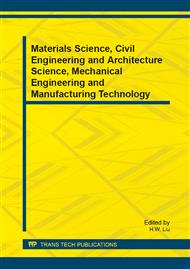p.1243
p.1248
p.1252
p.1256
p.1260
p.1264
p.1268
p.1272
p.1277
Assembly Process Planning Method for Complex Electromechanical Products
Abstract:
Currently, neither the efficiency nor the effectiveness is sufficient in the area of the assemble optimization that commonly involves the genetic algorithm. A novel method to solve the cumbersome problem in the optimization of assembly sequences was proposed. On the basis of the assembly constraint matrix, the optimized assembly sequence is obtained with the proposed evaluating factors of the process requirement. That is the evolution of the original genetic algorithm to a certain extent. The effectiveness of the proposed method was proved by the comparison with the ant colony algorithm.
Info:
Periodical:
Pages:
1260-1263
Citation:
Online since:
January 2014
Price:
Сopyright:
© 2014 Trans Tech Publications Ltd. All Rights Reserved
Share:
Citation:


